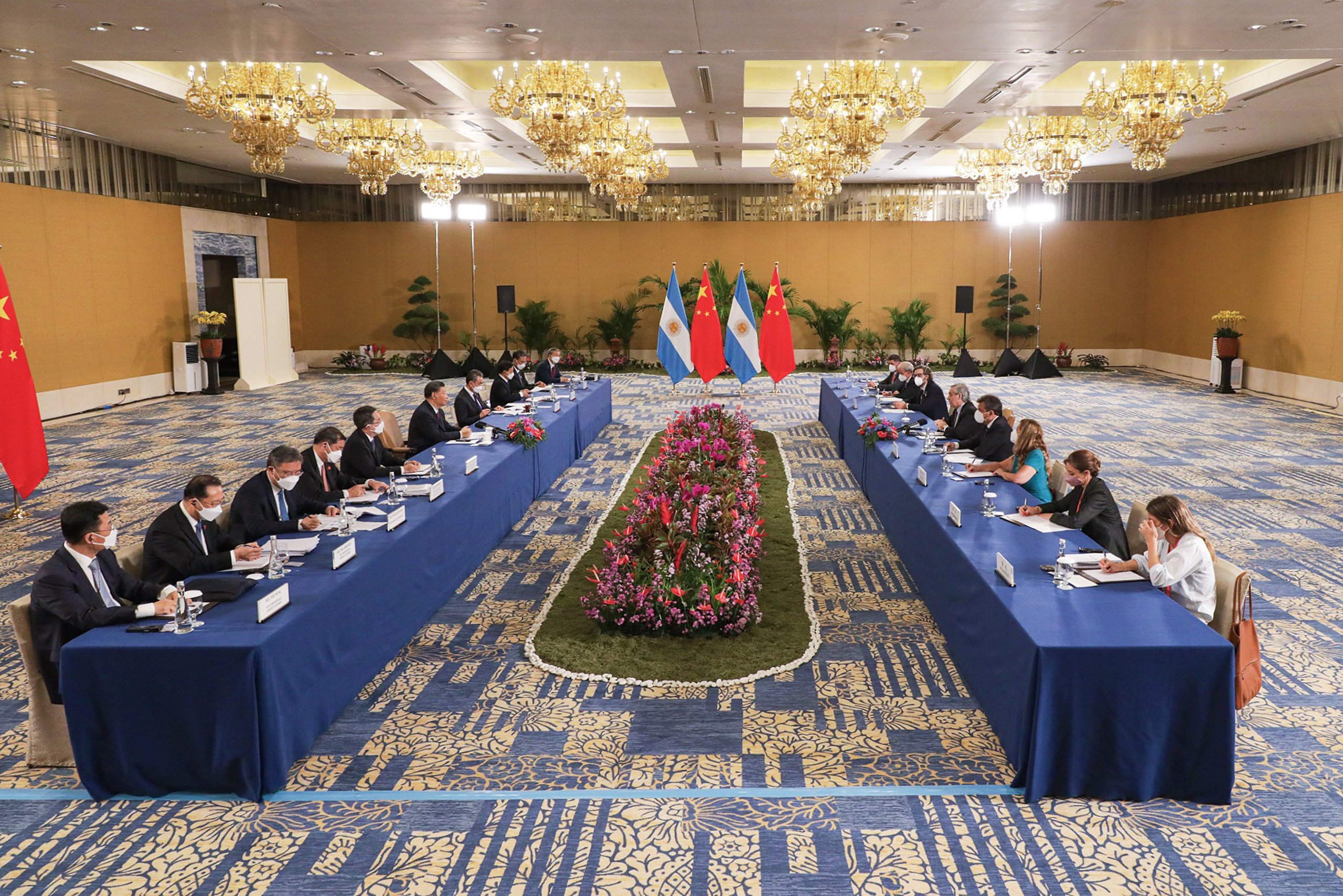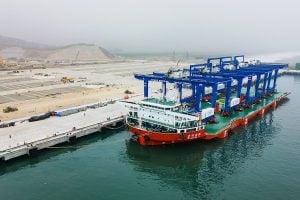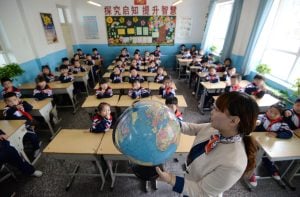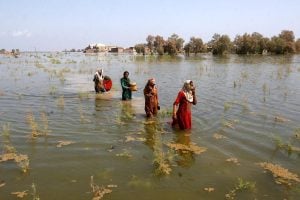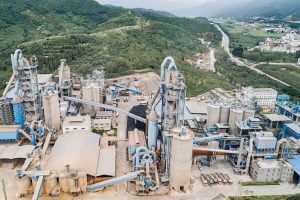Over the past 10 years, Argentina has been one of Latin America’s main recipients of Chinese investment into renewable energy. Amid four changes of Argentina’s government, and even before it joined China’s Belt and Road Initiative (BRI) in 2022, Chinese companies have backed numerous solar and wind power projects.
Despite such investments, Argentina still faces significant challenges in financing its energy transition with its economy still struggling. The country continues to focus on fossil fuel projects, an area in which Chinese companies have also invested heavily.
China is Argentina’s second-largest trading partner but the two countries’ relations have appeared to strain recently following the election of Argentina’s libertarian president, Javier Milei, in 2023. A series of statements on China by Milei and his officials have raised tensions.
China has so far played a “decisive” role in the country’s energy transition, says Juliana González Jáuregui, a researcher at the Latin American Faculty of Social Sciences (FLACSO) and Argentina’s National Council for Scientific and Technical Research (CONICET). However, this has occurred without Argentina seeking a transfer of technology and ensuring greater added value to domestic industries, she argues.
In this interview with Dialogue Earth, González Jáuregui also analyses China’s relationship with Argentina’s provincial governments in the context of the energy transition, and the role of Chinese companies in mergers and acquisitions with other companies. And she considers why the US and EU’s investment in Latin America is lagging behind China’s.
Dialogue Earth: To what extent has Chinese funding contributed to the transition to renewable energy in Argentina?
Juliana González Jáuregui: The participation of China and its state-owned and private companies has been decisive for Argentina’s energy transition, both directly and indirectly. Firstly, by participating in tenders under the RenovAr programme [a government scheme launched in 2016 to encourage private investment in renewable-energy auctions], winning many of them. Secondly, by executing the projects, especially those through PowerChina and Goldwind, which want to continue expanding in the country. There is a clear push from China to collaborate in the country’s energy transition.
What role has Argentine industry played in the deployment of the first wave of solar and wind projects in the country?
Argentina is far behind in the solar industry, but it has made more significant progress in wind energy. There is no comparison in terms of its costs. With the explosive advance of the Chinese industry, there is no way to compete in terms of prices and technology. One of the issues I have questioned has to do with technology transfer, and how Argentina could have pushed for such support for local industry to be incorporated into certain projects. There is no long-term vision in Argentina’s energy programme, and it is in this context that Chinese companies arrive. But the fact that Argentina does not have the capacity to sit down when it comes to negotiating and think about technology transfer has nothing to do with China. It has to do with us.
How has China worked with Argentina’s provincial governments regarding the energy transition?
Jujuy province is the emblematic and oldest case, and the one that gave rise to cooperation with the other provinces. There was a very clear understanding on the part of the Jujuy government that it had to be part of missions to China. It was one of the first provinces to achieve a twinning with a Chinese province [Guizhou, in 2018]. Then came the financing, with the Cauchari solar park as the most representative project, and now a recently inaugurated solar-powered train line. A similar process began with the provinces of Salta, Catamarca and Tierra del Fuego.
EU and US companies have also made investments in Argentina linked to the energy transition, notably in lithium extraction. What of their engagement with provincial governments?
Europe and the United States have not yet understood how important it is to move sub-nationally in Argentina, something that China achieved quickly and significantly. In Argentina, the provinces own natural resources, so the sub-national element is necessary.
Has Argentina’s 2022 joining of the Belt and Road Initiative made any difference to Chinese investments in renewables?
I saw no changes after the signing. The BRI is a label. It is something that China is interested in order to modify the international order within the framework of its own understanding of multilateralism. In Argentina, in fact, most of the investments came before the signing. But we have a different political dynamic to other countries in the region. Chile, for example, has held a consistent state position on its relations with China, and we have not.
These dynamics come as the BRI changes, away from state-loan-backed infrastructure deals, towards supposedly “small but beautiful” projects. What might this mean for Argentina and other countries hoping to receive investment?
It has to do with a recalibration following the Covid-19 crisis and China’s growing concerns over the scale of the debt it has incurred. In Latin America, the most emblematic cases are Venezuela and Ecuador, which are looking at how they are going to repay loans issued by Chinese policy banks. Internally, China is beginning to rethink what it is going to finance at the international level, and in the context of tensions with the United States. The focus is now shifting to financing projects linked to innovation and technology, with China’s goal of becoming a technological leader by the time of the centenary of the People’s Republic in 2049.
While financing renewable-energy projects, China has also remained an active partner in fossil-fuel projects. Have you seen any changes in this regard?
China replicates what other developed states do, exporting pollution outside its territory with fossil fuels. On the one hand, it is the state capable of driving the energy transition in the Global South. But on the other hand, it has not ended up cutting its dependence on fossil fuels and the dichotomy arises. China is one of the countries that supports the transition the most, but it is also one that invests and finances the most in fossil fuels.
To what extent have Chinese companies been active in mergers and acquisitions in Argentina’s green-energy sector?
In the wind and solar sector, the strongest development has occurred in Brazil, and in recent years also in Chile. In Argentina, we have some cases such as Goldwind, which has acquired wind farms that belonged to Isolux [of Spain]. This logic can grow further. Nowadays, we are not going to see so much state-state financing or large projects financed by state or commercial banks from China. Rather we will see implicit financing, where companies get funds to have more strength for mergers and acquisitions.
In your research, you have mentioned the need for a longer term plan between China and Argentina on renewable energy. How should this be done?
The idea of a plan has to do with bringing to the table the public and private sectors in Argentina, including the science and technology sector, to think about the energy transition. It does not mean going out to compete with China, but rather trying to have some impact on the value chains, to see what we could contribute from Argentina. China began its own energy transition with a wave of investment, and demanded technology transfer. Why can’t Argentina do that? This medium- and long-term plan is to think about communication between sectors, which does not exist in Argentina at the moment. We have a lot of fragmentation and there is little dialogue between ministries, agencies and the national and provincial governments.
How do you see Argentina’s energy transition in the next three years during the government of Javier Milei, in the midst of tense relations with China?
I see it as complex. The current government has a poorly informed view of the relationship with China. Mistakes have been made since the new government took office. I understand the desire to have ties with the United States, but in the current global context you have to include China in your foreign policy. On top of that, the government has made a rhetorical decision that climate change is not something Argentina needs to address. So I see it as difficult to have a long-term vision for the energy transition.
Milei has shown interest in boosting ties with the EU and the US. What might this mean for Argentina’s energy transition in terms of financing and projects?
If we think about the logic of positioning the Global North in the face of China’s rise, I see a window of opportunity for Europe, rather than the United States, in energy transition investments – but Europe is looking the other way. Germany is focused on its foreign policy strategy vis-à-vis China, including on innovation and energy transition, but is absent in renewables in Argentina. In the United States, the discourse is more focused on bad-mouthing China than on doing anything effective in Latin America.
Last year, the EU launched a wave of investments in Latin America under its Global Gateway programme, including projects on energy transition and critical minerals. What role do you think it will play in Argentina?
I see it so far as a discursive response to competition with China. The reality is that Chinese companies are making strong progress with renewables in Latin America and Europe is lagging behind, unless it decides to make a public investment in this sector. The logic of the Global Gateway is more private investment, which I don’t see the programme driving. The problem is that it does not have the financial muscle that China has, and the EU has not decided to provide a similar level of financing.
